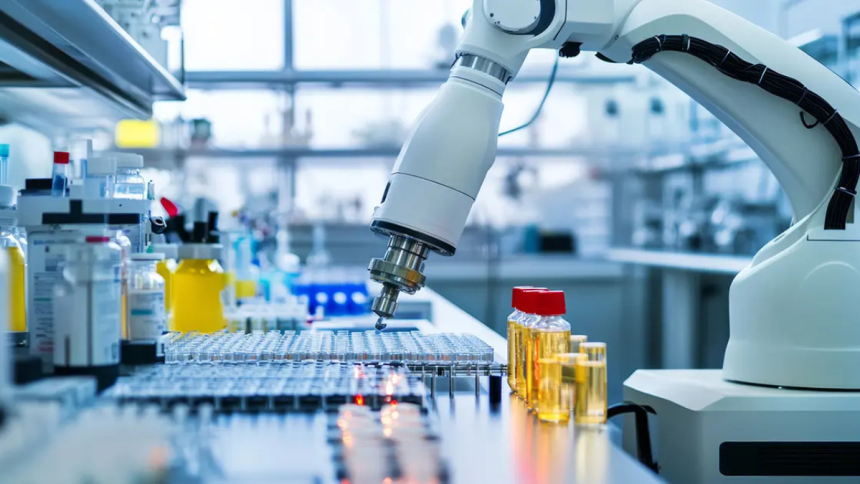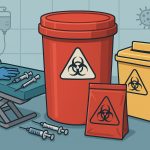The world of life sciences is changing fast. If you’ve been paying attention, you’ve probably noticed that things are moving at a speed and scale never seen before. From groundbreaking discoveries to the race against time in drug development, life sciences researchers and operators are under more pressure than ever to deliver results quickly and safely.
But here’s the thing: these challenges aren’t going anywhere. Instead, we’re now seeing a shift, a transformation powered by digital tools and new technologies that are making life sciences faster, safer, and smarter. It’s a new era, and it’s reshaping how research is done and how operations are run.
Let’s break down how these changes are happening—and why they matter to everyone, from researchers in the lab to patients around the world.
The Need for Change: Time’s Ticking, and the Stakes Are High
In life sciences, the stakes couldn’t be higher. The industry is racing to solve global health challenges, from curing diseases to developing vaccines. But there are major hurdles in the way. For starters, the pressure to cut costs and speed up timelines is more intense than ever. For example, the process of bringing a new drug to market can take over a decade and cost billions of dollars. Add to that the ever-tightening grip of regulatory compliance, and it’s no wonder that many researchers and organizations feel like they’re running on a treadmill.
The current systems, often outdated and siloed, just can’t keep up. While new treatments and breakthroughs are out there waiting to be discovered, traditional methods of research, testing, and operations are bogged down by inefficiency, long delays, and the inability to fully harness the data that is available. It’s clear that something needs to change.
Faster: Speeding Up Discovery and Development
If there’s one thing the life sciences industry needs right now, it’s speed. And that’s where technology comes in. Thanks to innovations in automation and data management, we’re seeing a massive acceleration in research and development.
Take high-throughput screening, for example. This technology allows researchers to test thousands of compounds in a fraction of the time it used to take. It’s like moving from manual labor to an assembly line—except the assembly line is powered by cutting-edge technology. Suddenly, discovering which molecules could be effective against a disease isn’t a months-long process. It’s done in days, or even hours.
Then, there’s cloud computing. By enabling researchers around the world to share data in real-time, cloud platforms break down the silos that have long existed in the field. This means faster collaboration, more timely decisions, and, ultimately, faster results. Whether it’s testing a new drug in clinical trials or sharing new research findings with global teams, the speed of discovery is picking up pace, and it’s all thanks to these technological advancements.
Think about how quickly COVID-19 vaccines were developed. It’s a prime example of how innovation in technology, along with some serious collaboration, can cut down development timelines dramatically. What used to take years is now happening in months. This level of speed isn’t just an outlier; it’s becoming the new norm in life sciences.
Safer: Keeping It Secure, Compliant, and Risk-Free
While speed is critical, safety is just as important. In the high-stakes world of life sciences, there’s no room for cutting corners. Regulatory compliance, patient safety, and risk management all have to be front and center. Luckily, digital tools are stepping in to make these processes smoother and more reliable.
Real-time monitoring, automated data tracking, and digital audit trails are helping life sciences organizations meet the tough demands of regulatory compliance. These technologies make it easier to maintain accurate records and ensure that every step of the research or production process is documented and traceable. This means no more scrambling to piece together data when an audit comes around.
Another major innovation? Predictive analytics. By using data to forecast risks before they happen, life sciences teams can proactively address potential issues. Whether it’s predicting adverse reactions in clinical trials or detecting anomalies in drug manufacturing, AI and data-driven tools are making it easier to identify risks early on, keeping patients and the industry safer.
Plus, when it comes to the global supply chain for pharmaceuticals, better tracking systems ensure that every batch of medicine is accounted for from the manufacturer to the patient. By enhancing transparency, these systems reduce the risk of errors, fraud, or contamination, leading to better outcomes and higher confidence in the products reaching the market.
Smarter: Making Better Decisions with Data
As important as speed and safety are, we can’t forget about intelligence. In today’s world, the ability to make data-driven decisions is more important than ever, and life sciences is no exception.
By integrating vast amounts of structured and unstructured data, life sciences organizations can unlock new insights that were previously hidden. For example, in clinical trials, AI algorithms can sift through mountains of patient data to find patterns that help researchers predict which treatments are likely to work best for individual patients. This leads to more effective treatments and personalized care plans.
Machine learning (ML) is also helping make smarter decisions in drug development. By analyzing historical data from past trials, ML models can predict which compounds have the highest likelihood of success, reducing the risk of failures down the line. It’s like having a crystal ball that shows you the best path forward.
On the operational side, life sciences organizations are using data to optimize everything from manufacturing to logistics. Whether it’s ensuring that drugs are produced with the highest quality or managing the distribution of medical supplies, data is being used to make operations more efficient and cost-effective. A key enabler of this transformation is data integration & interoperability for the life sciences industry, ensuring that systems and platforms communicate seamlessly, reducing redundancies, and enabling smarter, faster decisions. Smarter decision-making is helping not only speed up processes but also reduce errors and waste.
The Role of Machine Learning in Life Sciences
Let’s zoom in on one of the most exciting aspects of this transformation: machine learning (ML). ML is at the heart of a lot of the progress happening in life sciences today. While we’ve mentioned it a bit already, it’s worth diving into how exactly ML is making a difference.
One key area ML is changing is drug discovery. By analyzing huge datasets of biological and chemical information, ML algorithms can identify patterns that might otherwise go unnoticed. This allows researchers to find new drug candidates faster and more efficiently. It’s like having an assistant who never sleeps, tirelessly combing through data to find the next big breakthrough.
In clinical trials, ML is helping with everything from participant recruitment to trial design. By analyzing data on patient demographics, genetic factors, and medical history, ML can help researchers identify the ideal participants for a trial, improving both the speed and accuracy of results.
In manufacturing, ML is being used to ensure that production processes are as efficient as possible. It helps predict when equipment might fail, optimize supply chains, and even automate quality control checks to ensure every batch of medicine is up to standard.
Ultimately, ML is making life sciences operations smarter, faster, and more precise. But this is just the beginning. As more data becomes available and as technology continues to advance, the possibilities are endless. The ability to integrate this wealth of data efficiently is becoming a critical factor in driving these advancements.
What’s Next: A Glimpse Into the Future
So, what’s on the horizon? The future of life sciences looks more automated, more intelligent, and more connected than ever before. We’re on the brink of seeing fully autonomous labs where machines handle repetitive tasks, leaving researchers free to focus on innovation. Continuous monitoring systems will provide real-time feedback, making the entire research and development process more dynamic.
The next big thing? Real-world data (RWD). With more people wearing health trackers and sharing their data, researchers will have an unprecedented wealth of information to analyze. This will help fine-tune treatments, optimize clinical trials, and improve patient outcomes. These advancements will be possible only through data integration & interoperability for the life sciences industry, allowing researchers to combine real-world data with clinical and research data seamlessly. It’s a truly exciting time for the industry—and for anyone invested in healthcare.
Conclusion: A New Era Is Here
So, what does all of this mean? Well, faster, safer, and smarter isn’t just a tagline—it’s the reality of life sciences today. From the moment research begins to the moment a product reaches the market, technology is making things better, faster, and more efficient. And the best part? It’s only going to get better from here.
Whether you’re a researcher, a healthcare provider, or just someone who benefits from new treatments, the changes happening in life sciences are affecting us all. So let’s buckle up. The new era of life sciences is here, and it’s bringing a world of possibilities with it.
Lynn Martelli is an editor at Readability. She received her MFA in Creative Writing from Antioch University and has worked as an editor for over 10 years. Lynn has edited a wide variety of books, including fiction, non-fiction, memoirs, and more. In her free time, Lynn enjoys reading, writing, and spending time with her family and friends.















